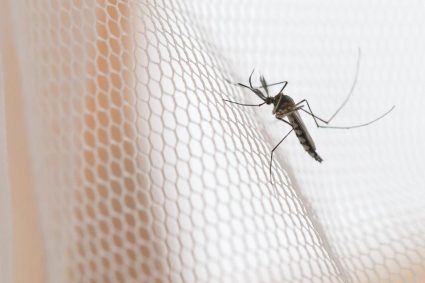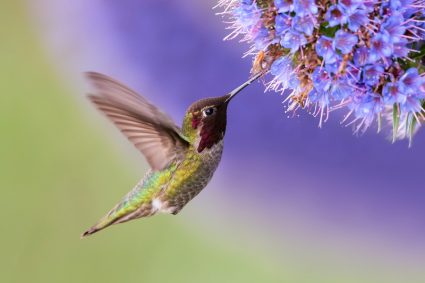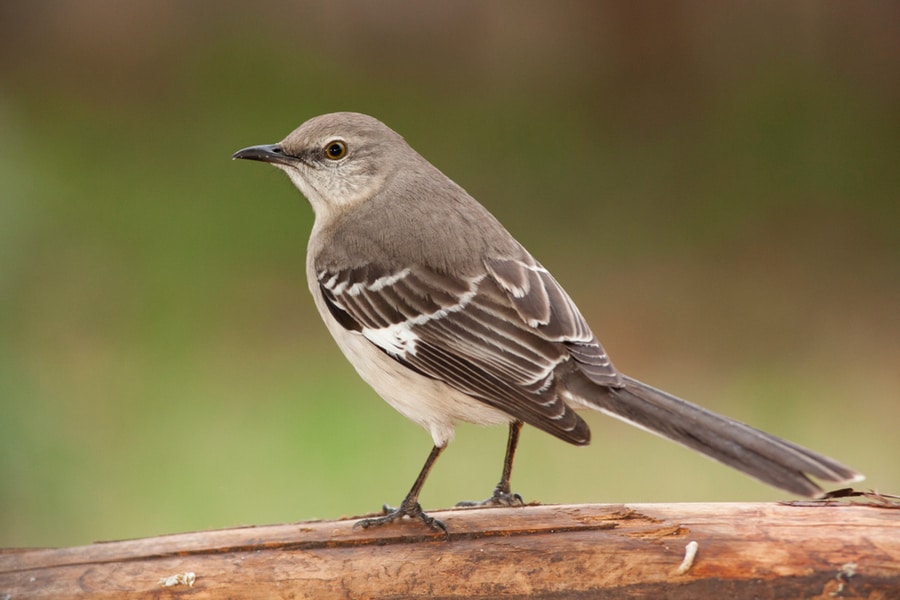
Mockingbirds are clever birds that can outsmart humans because of their ability to imitate the sound of other birds. They create elaborate songs containing repeated phrases they picked up from other birds.
They love to perch and sing all these songs loudly and continuously. This is especially true during the mating season when birds that have not mated sing all day and night.
When it comes to food, mockingbirds do not have an appetite for seeds or nuts. Instead, they are more interested in eating insects such as beetles, moths, bees, ants, and grasshoppers.
While all this sounds cute and funny, mockingbirds are more than this. They can get extremely territorial and flock to the feeders. While doing so, they keep out other birds because they don’t like to share their food.
Suppose they have marked their territory over your feeder because of the food available. In that case, they don’t allow other birds to come near it.
So, it becomes necessary to keep them away from bird feeders. Here are a few ways to keep the mockingbirds away from feeders:
- Only keep seeds in the feeder.
- Give mockingbirds their feeder.
- Move your feeder.
- Remove the food source.
- Try a predator statue.
Without further ado, let’s dive into how you can keep mockingbirds away from feeders so other birds can come and nest there!
5 Ways To Keep Mockingbirds Away From Feeders
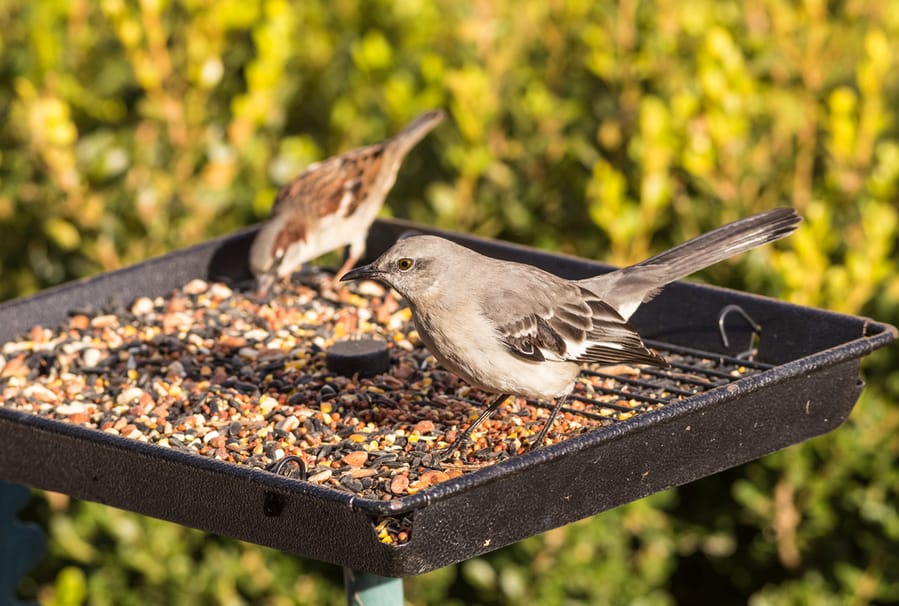
Let’s review all the ways you can keep mockingbirds away from your feeders one by one.
1. Only Keep Seeds in the Feeder
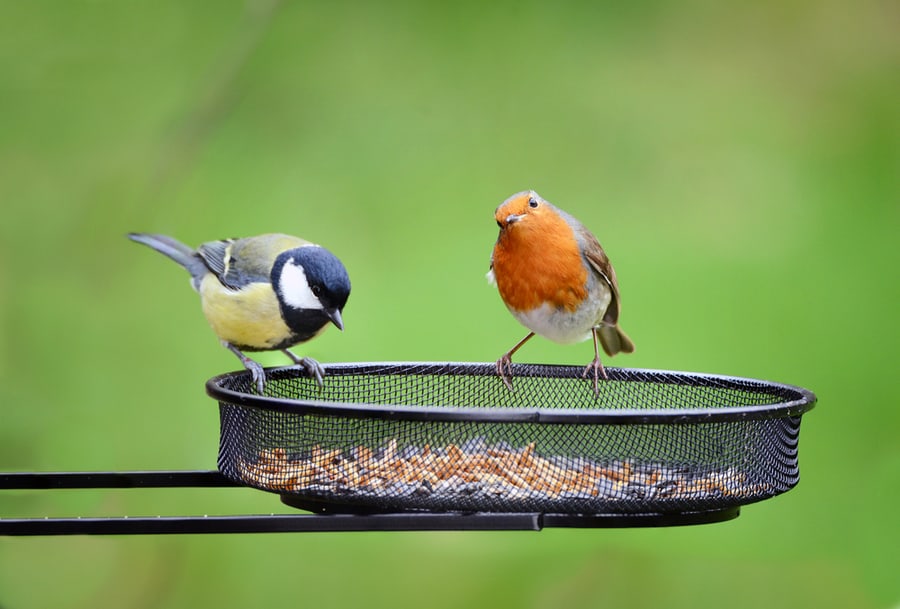
Mockingbirds only feed on other insects, such as beetles, moths, bees, ants, and grasshoppers. In winter, they do like to eat fruits and berries. But nuts and seeds are a big no!
So, if your feeder has any insects or fruits, you should reconsider the food you provide for the birds.
Ensure the bird feeder has all sorts of seeds and nuts to keep the mockingbirds away. You can use plain sunflower and safflower seeds.
It might take a while for the mockingbirds to realize that their food source has been cut before leaving, so be patient.
2. Give Mockingbirds Their Feeder
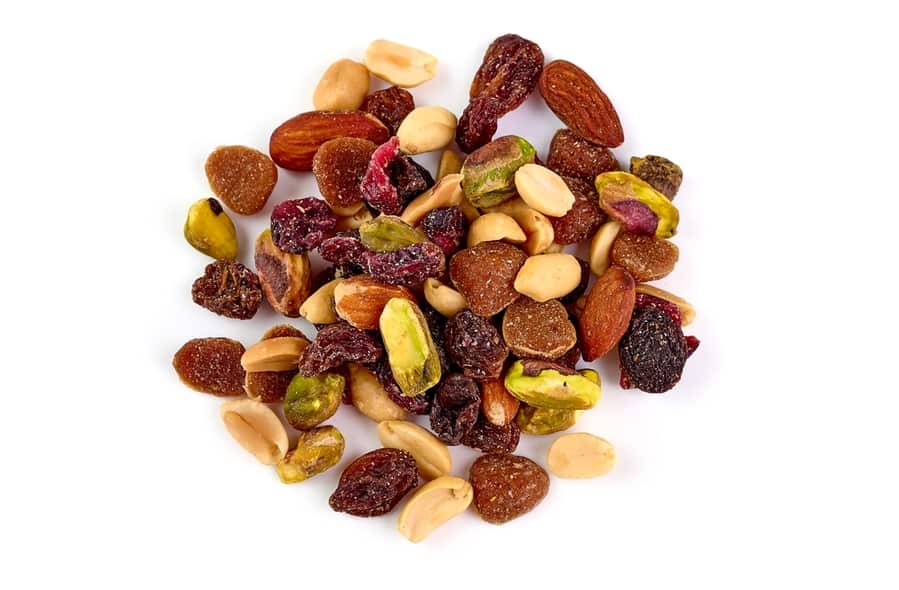
An excellent alternative for completely cutting off food sources for mockingbirds is to assign them an entirely different feeder. This feeder needs to be separate from your other bird feeders.
Place this as far away as possible from your other feeders.
Make sure to put in suet, grapes, raisins, cranberries, and other dried fruit mixes. You can have all sorts of things mockingbirds like to feed on.
The mockingbirds will get lured into this feeder because of the fruits or berries and claim their territory.
However, this is only possible if this feeder is kept much farther from the others. Otherwise, the mockingbirds will claim both as theirs.
3. Move Your Feeder
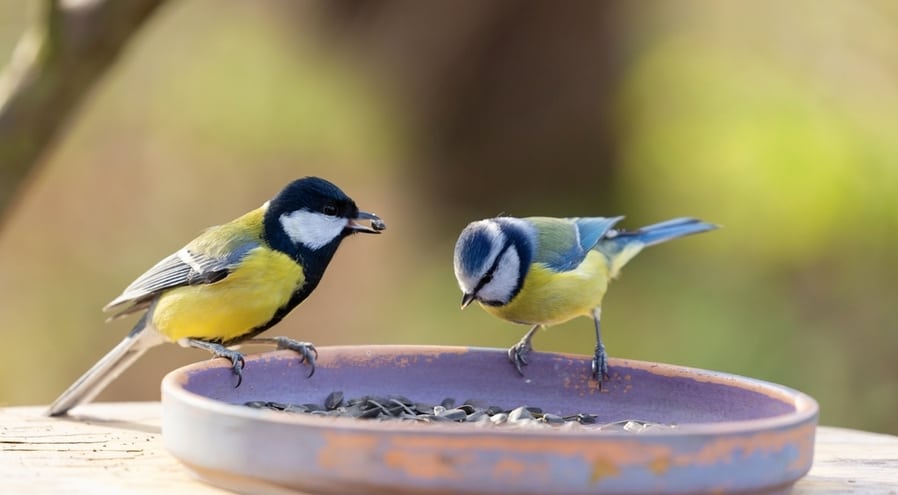
Sometimes the mockingbirds are not attracted to the feeders because of food. Yet you might still notice them around the feeders.
This is because, as stated previously, mockingbirds are very territorial birds. So they claim certain spots to be their own.
Therefore, you are advised to move that particular feeder from that spot. The mockingbirds will have nowhere to nest, so even if they claim any space as their own, they won’t be able to live there and scare off other birds.
Just make sure that you move the feeder as far away as possible.
4. Remove the Food Source

The food source keeps them hooked to the feeder if the mockingbird situation persists even in the non-breeding season.
They have marked it as their food territory and will only leave it if you remove the food source.
They are defending their food source and will get aggressive in doing so.
You can take down the feeder and wait until the mockingbirds leave.
In a worst-case scenario, you can remove any fruit plants. But, then other native bird species might also stop coming.
5. Try a Predator Statue
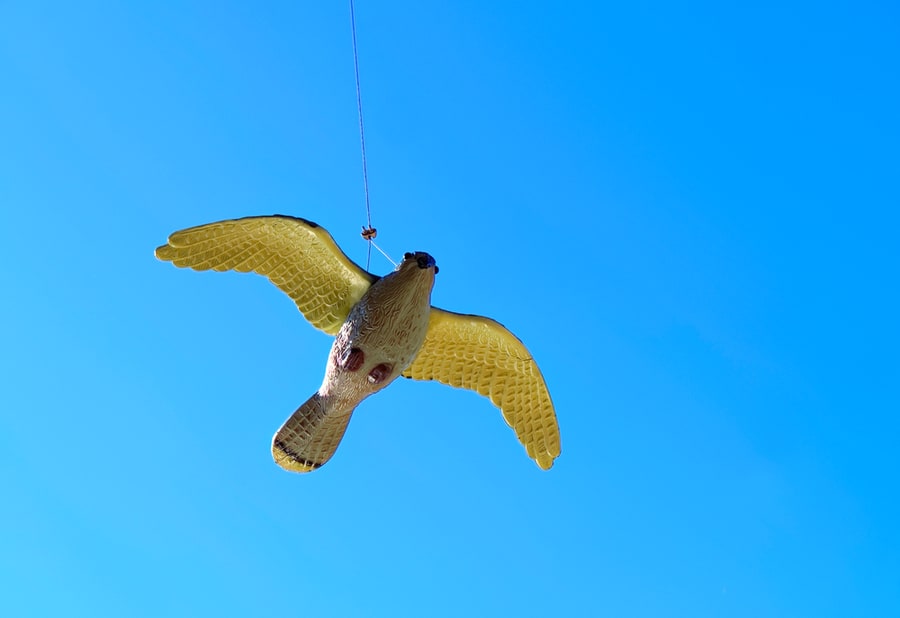
Mockingbirds are usually scared of other larger birds, such as owls and hawks, as they can eat them.
Now obviously, you can’t have real owls and hawks. Instead, you can place decoys that would scare them off.
But remember that mockingbirds are clever birds, and they will eventually know that it’s just a statue. So your tactic might fail.
Also, it would be best to remember that keeping owl or hawk statues can scare other birds.
Still, giving it a shot is worthwhile. You might never know how successful it will be in your particular case.
Summary
Mockingbirds are lovely creatures when they sing and mimic other birdies. But, just like everyone else, they get defensive and territorial regarding their space. They do this either because of food or to protect their little ones.
In doing so, they get aggressive and scare away other birds, which is not good if you try to create biodiversity in your garden.
The easiest way to keep them away from the feeders is to remove their food source, which includes insects, fruits, and berries.
Instead, keep seeds and nuts, which they would never want to eat! That’s the most effective way of keeping mockingbirds away.
Keeping mockingbirds away from feeders might be tricky, but it’s not impossible.
Frequently Asked Questions
What To Do When a Mockingbird Attacks?
The best way to deal with such a situation where the mockingbirds have attacked is to avoid that area altogether, as they might harm you. You can use a flashlight to scare them away.
How Do Mockingbirds Reach When Threatened?
When mockingbirds feel any level of vulnerability, they typically react by rallying from the nest, making alarm calls, and diving aggressively at the trespasser.
Are Mockingbirds Afraid of Humans?
Mockingbirds are incredible at remembering who makes them feel threatened. They will start dive-bombing the person if they see them again.
So, it depends on the person. If you appear friendly to a mockingbird, they might not get scared of you.



